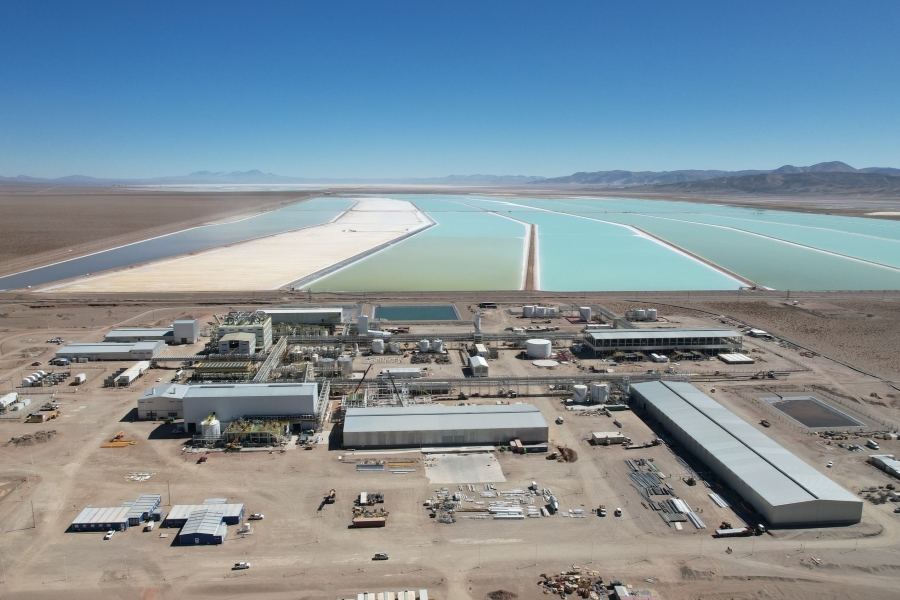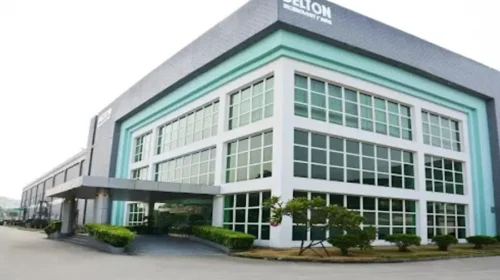Plunging prices push lithium mining giants into the red

The industrial metal used in electric car batteries has dropped 85% from its price peak to around $90,000 per ton, hit by a supply glut and slowing vehicle sales
Key Takeaways:
- Chinese mining giants Tianqi Lithium and Ganfeng Lithium are set to drop from healthy profits to deep losses in the first half of the year
- Falling demand and huge oversupply leave the price of lithium carbonate with little room to rise
By Fai Pui
The road to clean energy is full of ups and downs as market forces respond to new technologies. Solar panels went from a boom to a supply glut, and now lithium has followed suit.
The race to produce electric cars sent lithium mining into overdrive in recent years, as demand for the key battery ingredient soared. But sales of new energy vehicles have since slowed down and lithium producers are feeling the pain of overcapacity.
Industry leaders Tianqi Lithium Corp. (9696.HK; 002466.SZ) and Ganfeng Lithium Group Co. Ltd. (1772.HK; 002460.SZ) both issued earnings alerts this month, saying they were on course to swing from healthy profits to hefty half-year losses. Tianqi predicted it would land between 4.88 billion yuan and 5.53 billion yuan ($672 million and $762 million) in the red in the first half of the year, while Ganfeng estimated a loss between 760 million yuan and 1.25 billion yuan.
Lithium carbonate prices reached a peak of $600,000 per ton in 2022 when supply was struggling to catch up with demand. But then oversupply kicked in, sending the price plummeting to current levels around $90,000 per ton, down 85% from the 2022 highs and 70% lower than just a year ago.
Although prices were dipping, lithium miners were still making substantial profits this time last year. Tianqi earned 6.45 billion yuan in the first half of last year and Ganfeng was 5.85 billion yuan in the black. But as prices spiraled downwards, the toll on the bottom line increased.
As leading companies at the upper end of the battery supply chain, the lithium miners were particularly sensitive to price shifts, said Kenny Wen, head of investment strategy at KGI Asia. On the demand side, they faced pressure in the past year from slowing vehicle sales and the delayed rollout of new models in the United States and Europe. Meanwhile on the supply side, increased production in Argentina and other South American countries helped push output up 20%. Excessive speculation had inflated prices, leaving the market further to fall and flatten the earnings of the two lithium giants, Wen said.
However, investors saw some positives in the numbers for the second quarter. Over three trading days, Tianqi shares actually rose 7.6% and Ganfeng jumped 13.8%.
Ganfeng estimated its earnings would come back into the black for the second quarter, with net operating profit between 54 million yuan and 154 million yuan. Tianqi expected to shrink its quarterly losses to between 980 million yuan and 1.63 billion yuan in the second quarter, much less than the 3.9 billion yuan in the first three months.
Investment woes also cast a shadow over both sets of earnings. Ganfeng said its investment in Australian mining company Pilbara Minerals Limited (PLS) lost a big chunk of its market value due to a falling stock price. Tianqi was dragged down by a poor first-half performance by its joint-venture company Sociedad Quimica Y Minera De Chile S.A. (SQM).
Ganfeng has a 5.74% stake in PLS, which owns the Pilgangoora lithium mine, one of the biggest in the world. In the first quarter, the fair value of Ganfeng’s financial assets was 270 million yuan in the red. And the PLS share price fell another 20% in the second quarter to its lowest level in a year, dragging on Ganfeng’s performance.
Troubled investments
Santiago-based SQM has not yet announced its second-quarter results. But in April a Chile court issued a ruling that would wipe around $1.1 billion off the firm’s net profit in back taxes. According to Bloomberg estimates, SQM is likely to have suffered a big earnings blow in the first half that would hurt Tianqi’s investment returns.
Other lithium producers are also having a tough time. Qinghai Salt Lake Industry (000792.SZ) expects its first-half profit to fall 54.9% to 66.7%, while Youngy (002192.SZ) is estimating a drop of 38.8% to 49.7% from the same period a year earlier. The outlook for Sinomine Resource Group (002738.SZ) is a fall of 60.1% to 69.4% and Sichuan Yahua Industrial (002497.SZ) is set for a plunge ranging from 87.4% to 91.6%. Tibet Mineral Development (000762.SZ) is the only one to forecast a rise, with profit expected to jump 260% to 410% on higher prices for other metals.
Market watchers doubt whether the price of lithium carbonate can recover in the second half as the industry struggles to tackle overcapacity and ample supply.
China’s inventory of lithium carbonate has swelled to 111,000 tons, while battery demand is falling, according to a CCB Futures report. The elevated inventory is likely to send the price down to $80,000 per ton by the end of the year, the report said. Huatai Futures has predicted the lithium price will bump along the bottom as the market dynamics are unlikely to change significantly in the second half of the year.
KGI Asia’s Wen sees limited upside for lithium prices as demand for electric cars decelerates. He said it was hard to forecast when the market would bottom out, but businesses at the initial and middle stages of the battery supply chain would continue to struggle. “Thus, I maintain a neutral stance on lithium stocks,” he said.
The investment bank Daiwa was more upbeat about Ganfeng than Tianqi. Ganfeng could make profits on its lithium compound business by bulk selling at lower prices, Daiwa said in a research report. The company could outperform its peers in the second half if the battery business is able to recover, it said.
UBS said Ganfeng had almost cleared its inventory of high-priced spodumene concentrate and had increased its sales of its lithium chemicals in the first half, justifying a continued “buy” rating for the stock with a target price of HK$46.96.
To subscribe to Bamboo Works free weekly newsletter, click here




